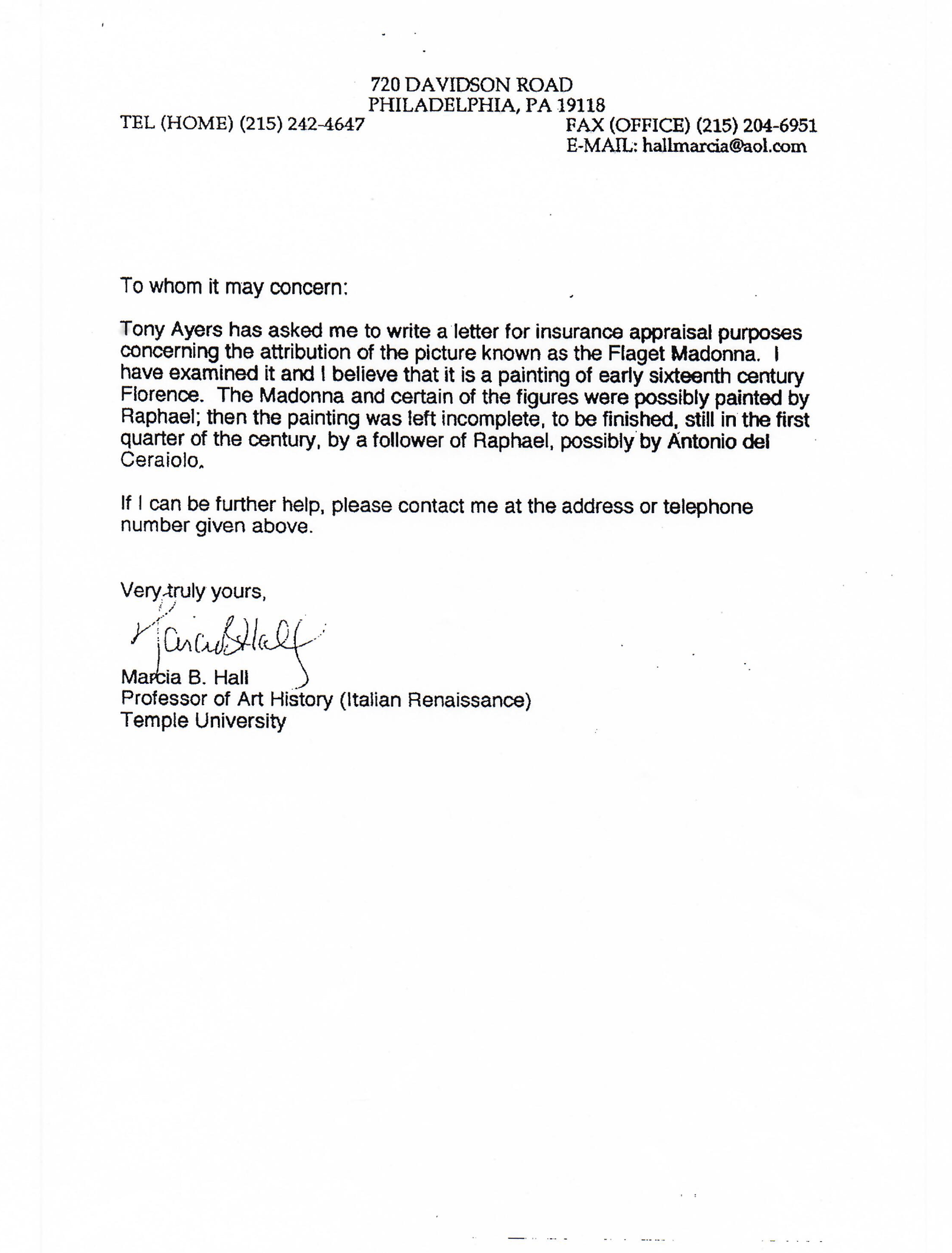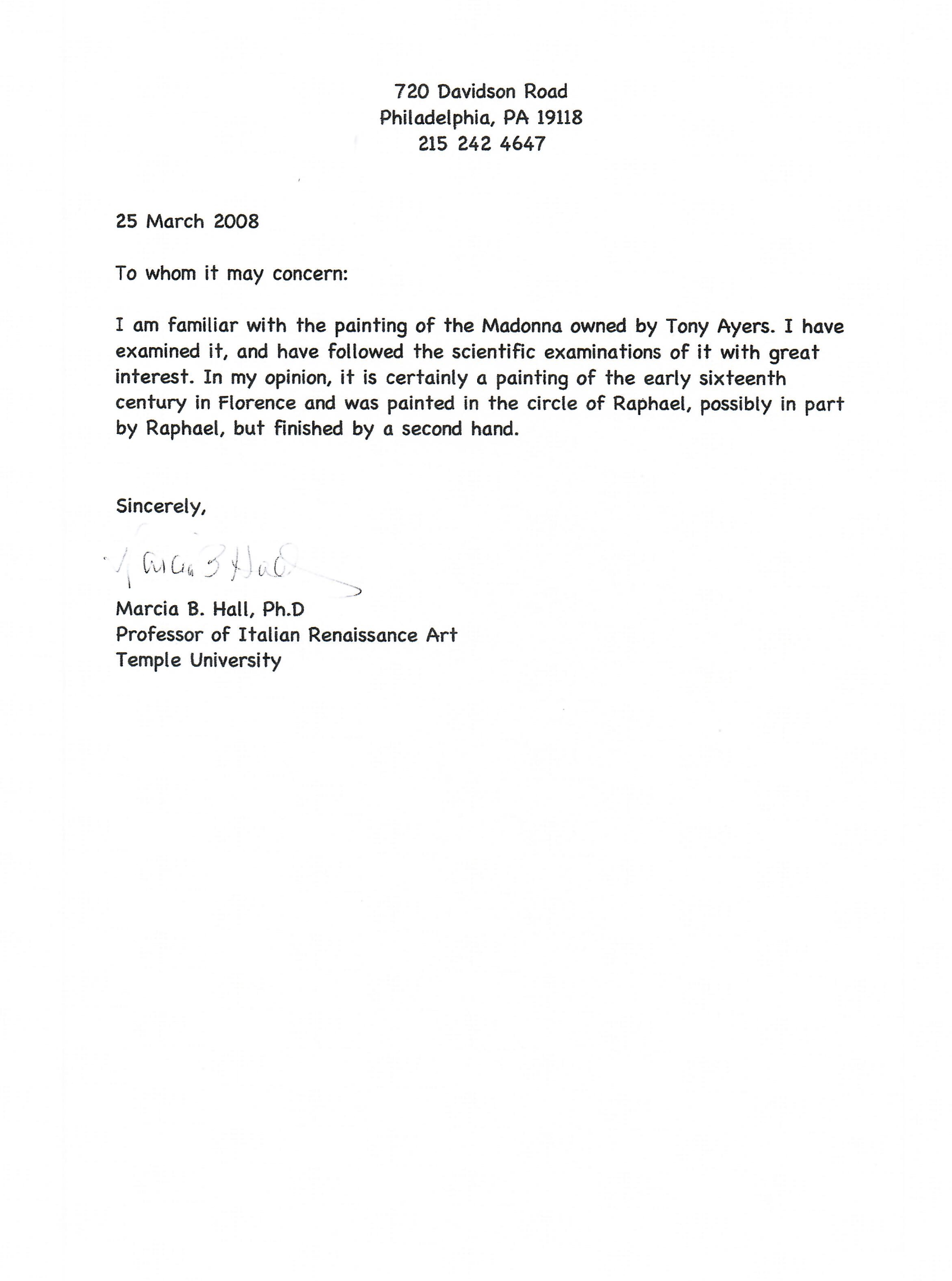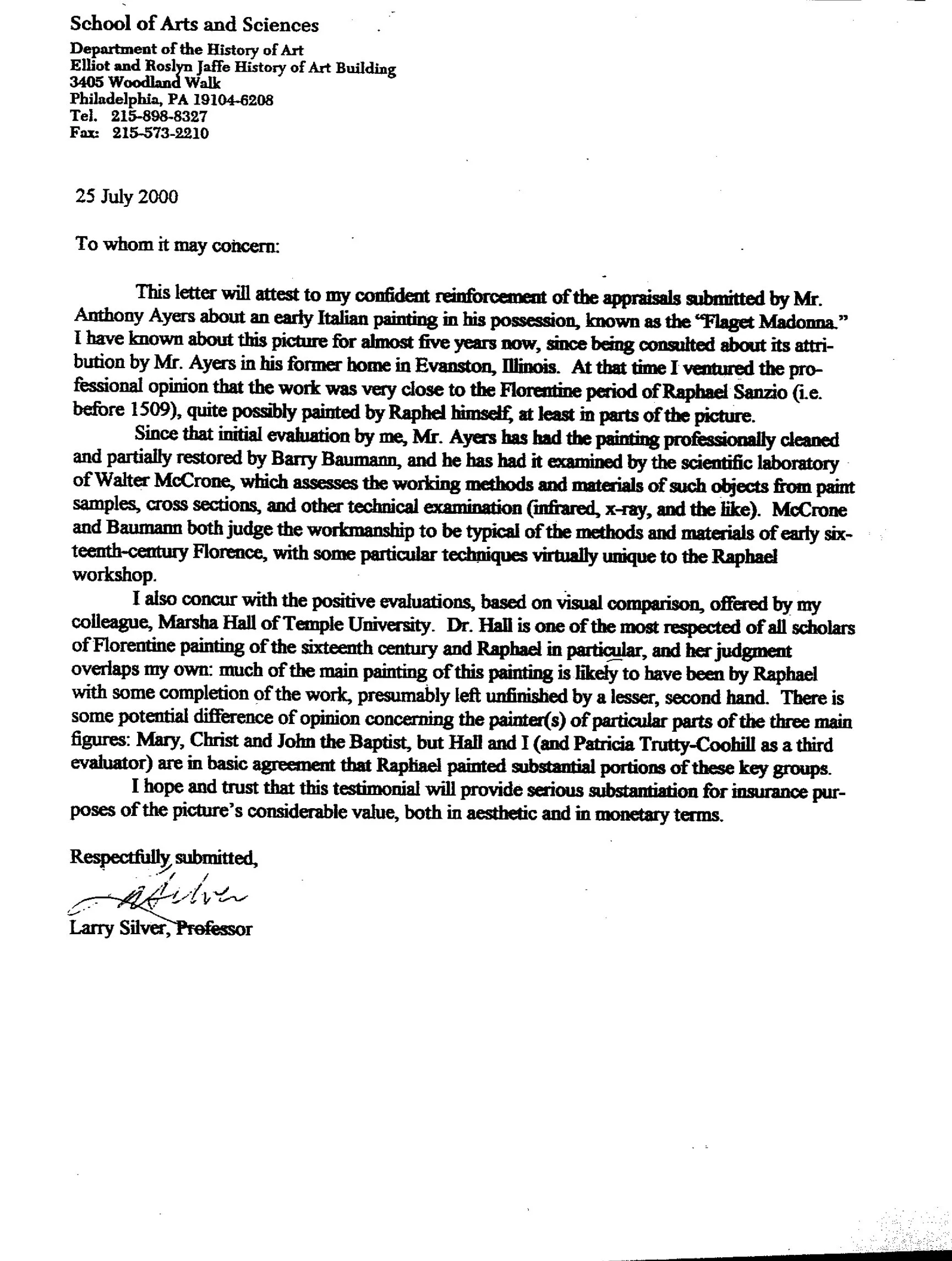Marcia B. Hall, Ph.D., a renowned Raphael scholar (contributing editor of the Princeton Raphael Symposium, Raphael’s School of Athens, After Raphael, The Cambridge Companion to Raphael, Rome (Artistic Centers of the Italian Renaissance), Michelangelo’s ‘Last Judgment,’ Michelangelo: The Frescoes of the Sistine Chapel and author of Color and Meaning Practice and Theory in Renaissance Art) has come up with a theory of the genesis of the Flaget Madonna. Professor Hall suggests that Raphael originally intended to create this painting as a sample to show prospective clients when he moved to Florence circa 1504. He planned the painting to be a two-figure composition (Virgin and Christ Child). Raphael began by painting these two figures without any background, and the blue drapery of the Virgin was only partially completed. The painting could then be shown to prospective clients in Florence to show what Raphael was capable of, and one which he could personalize to the client by adding a landscape that was important to them (their hometown, their palazzo on a hill, etc.) and any details that their humanist advisors might dictate.
When the painting was commissioned by, or for, the Della Rovere family around the time Raphael departed Florence for Rome (1508), he left a sketch to include the additional figures of St. John the Baptist, a winged angel, and St. Joseph. However, after Duke Guidobaldo da Montefeltro’s death, the St. Elizabeth figure was added in place of the winged angel to express somber (mourning) as an homage to the mourning Duchessa Elisabetta. The inclusion of an oak (rovere) tree, rather than St. Joseph, as intended by Raphael’s sketch, was added and entirely appropriate for a painting intended for the Della Rovere, particularly when one considers the goldfinch perched in its branches because one of the iconographic symbols of the goldfinch is it’s relationship to the papacy. When detached from the Holy personages, the goldfinch gave similarity of its coloration to that of the papal tiara and, in this case, more specifically to Pope Julius II Della Rovere, who was then in power.
Larry Silver, Ph.D., Farquhar Professor of Art History at the University of Pennsylvania, emeritus, and a renowned Northern Renaissance authority, supports Professor Hall’s opinion. Dr. Silver has followed the research from the beginning and was the first to suggest Raphael as the author of the Flaget Madonna.



Patricia Ann Trutty-Coohill
A noteworthy American Art historian, Leonardo authority, and educator believes the Flaget Madonna may represent one of Raphael’s earliest assimilations of the work of Leonardo.
Member of International Society for Phenomenology Aesthetics and the Fine Arts (secretary general since 1995), College Art Association, Renaissance Society American, Raccolta Vingana (Italy).
Dr. Walter C. McCrone (1916-2002), founder of the McCrone Research Institute, is often referred to as the “Father of Modern Microscopy” because his work revolutionized the use and understanding of the light microscope for materials analysis.
Dr. McCrone trained thousands of students worldwide in the use of microscopy, wrote hundreds of articles and books, gave thousands of presentations and lectures on microscopy, and developed numerous accessories, techniques, and methodologies to push the state-of-the-art in microscopy.


